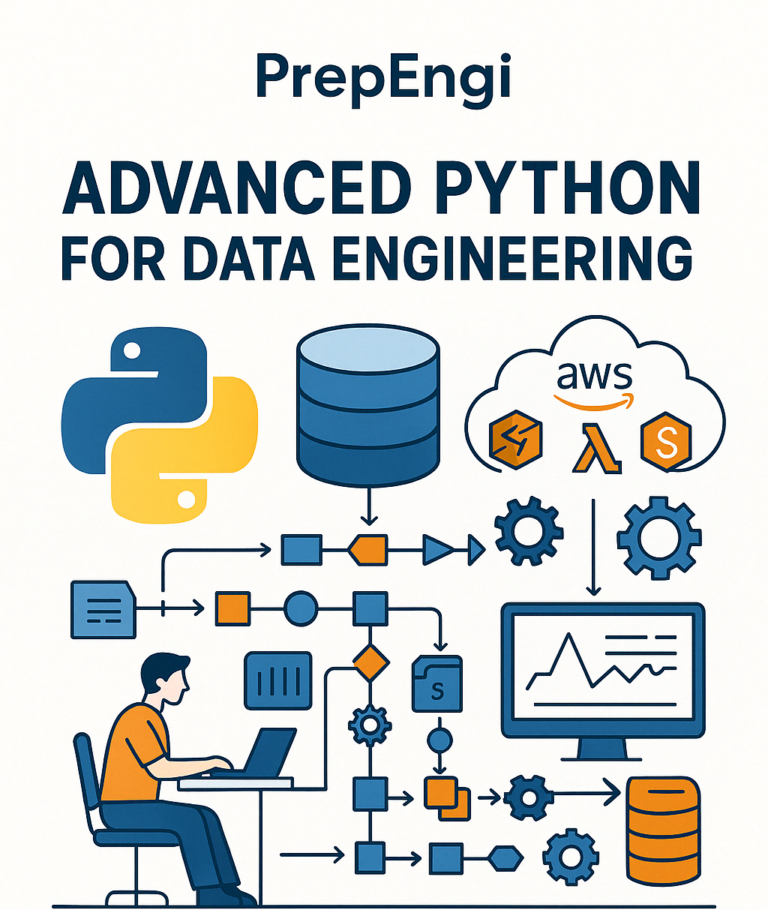Setting Up Your Environment
Python and Pandas for ETL
Handling JSON and CSV Files
Python with AWS SDK (Boto3)
Python & SQL (with SQLite/MySQL)
Data Cleaning with Pandas
Working with APIs in Python
Building Batch Jobs in Python
Real-Time Data Pipelines with Python
Logging & Error Handling in Python
ETL Jobs with Cron and AWS Lambda
Welcome To Python For Data Engineering

 Who Is This Tutorial For?
Who Is This Tutorial For?
This tutorial is tailor-made for aspiring and experienced Data Engineers who already have a basic grip on Python and are ready to level up their skills. If you’re working with data pipelines, managing ETL processes, or dealing with big data tools like AWS Glue, Spark, or Airflow — you’re in the right place.
Whether you’re preparing for your next big role, aiming to streamline your existing workflows, or just love writing clean, efficient code, this advanced Python guide will give you the real-world tools and techniques that every modern data engineer should master.
What You’ll Learn
In this hands-on tutorial, you’ll dive deep into:
-
Writing high-performance Python code optimized for data workflows
-
Working with large datasets efficiently using generators, chunking, and libraries like
pandas,dask, andpyarrow , Pickle . -
Building robust ETL pipelines and integrating with tools like AWS, Airflow, and databases
-
Automating data engineering tasks using Python scripts and CLI tools
-
Debugging, testing, and packaging Python code like a pro
By the end of this series, you’ll be well-equipped to take on complex data engineering challenges with confidence and write Python code that scales beautifully.
Key Use Cases of Python in Data Engineering
| Use Case | Description |
|---|---|
| ETL Pipelines | Extract, transform, and load data using Pandas, SQLAlchemy, or PySpark. |
| API Integration | Pull or push data to services using requests or httpx. |
| Data Cleaning | Handle missing values, duplicates, and more with Pandas. |
| Database Interaction | Connect to SQLite, MySQL, PostgreSQL, or MongoDB. |
| Cloud Integration | Use AWS SDK (boto3) to interact with S3, Lambda, Glue, etc. |
| Automation | Schedule recurring tasks using cron jobs or airflow. |
Prerequisites
Before jumping in, make sure you’re comfortable with:
-
The basics of Python (variables, functions, loops, classes, etc.)
-
SQL fundamentals (SELECT, JOIN, WHERE, GROUP BY)
-
A general understanding of data processing concepts (ETL, batch vs. streaming)
If that sounds like you — let’s dive in and take your Python skills to the next level!

